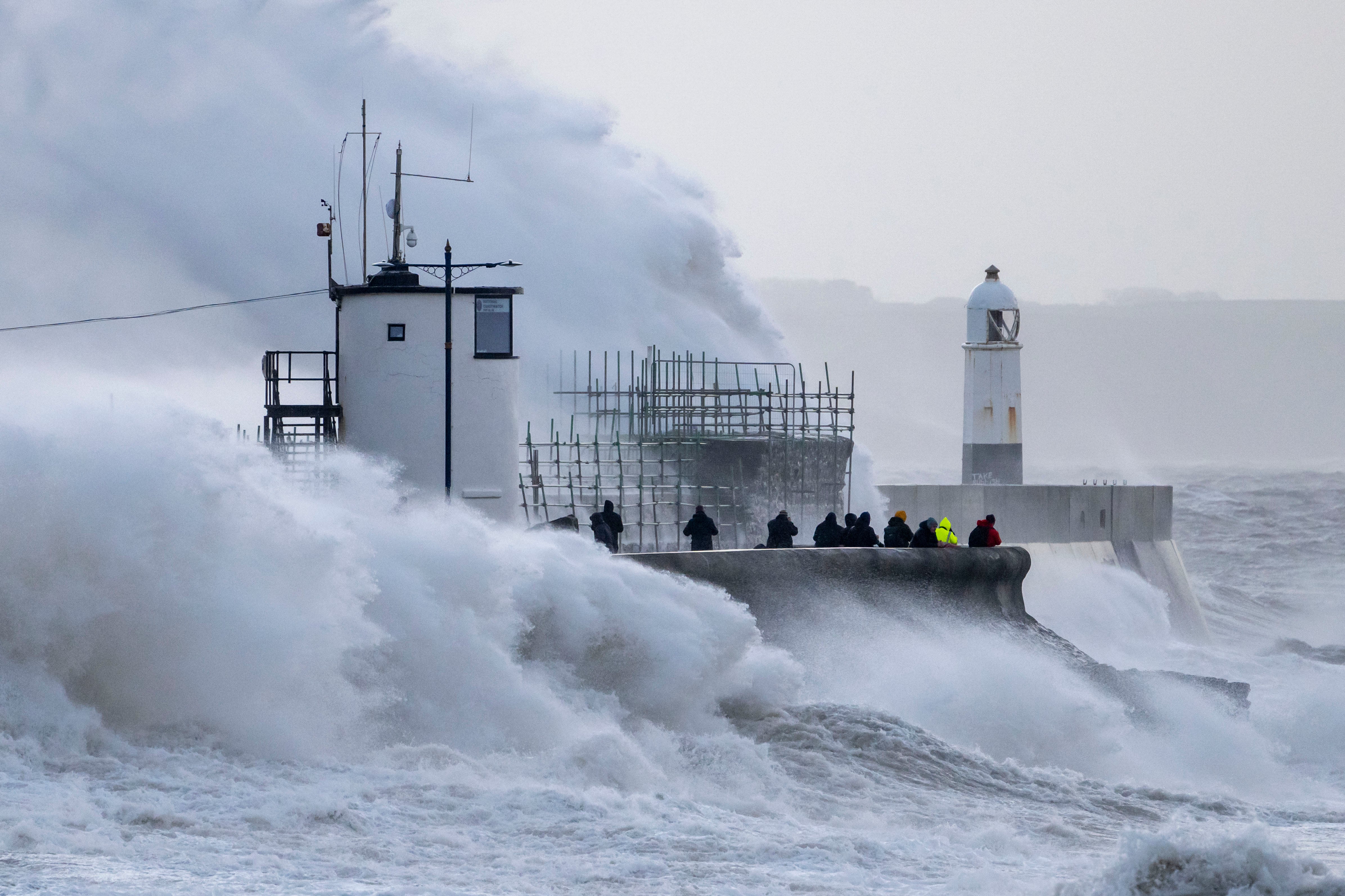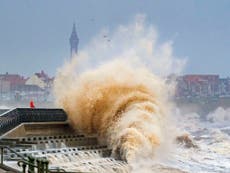Storm Eunice: How to stay safe in 100 mph winds
Keep indoors if possible, tie down bins and definitely don’t let go of children...

Your support helps us to tell the story
From reproductive rights to climate change to Big Tech, The Independent is on the ground when the story is developing. Whether it's investigating the financials of Elon Musk's pro-Trump PAC or producing our latest documentary, 'The A Word', which shines a light on the American women fighting for reproductive rights, we know how important it is to parse out the facts from the messaging.
At such a critical moment in US history, we need reporters on the ground. Your donation allows us to keep sending journalists to speak to both sides of the story.
The Independent is trusted by Americans across the entire political spectrum. And unlike many other quality news outlets, we choose not to lock Americans out of our reporting and analysis with paywalls. We believe quality journalism should be available to everyone, paid for by those who can afford it.
Your support makes all the difference.Storm Eunice has arrived and, if the forecasters are correct, it’s going to be a grim 12 hours across much of the UK.
Gales of up to 100mph, coastal and river flooding, and prolonged power outages have all been predicted.
Two red weather warnings covering most of the south of England and Wales – and an amber warning stretching up to Manchester – have led to hundreds of schools being shut, trains cancelled and the army placed on stand-by to help deal with emergencies. There is, officials say, a danger to life.
But what can individuals do to keep safe during such a storm?
Stay inside is the most simple and effective piece of advice, according to experts.
“When you have winds that are reaching 70mph and more, these is a clear risk to life,” says Professor Hannah Cloke, a researcher in natural hazards at the University of Reading. “Trees and power lines get blown down, tiles come off rooves, chimneys fall, wheelie bins get swept away. If you are hit by any of those things, they will potentially kill you. So the advice is stay inside if you can. We’ve all had a lot of good practice at that over the last two years so I would say have one more day doing it if possible.”
Even while inside, danger may lurk. If you live in a property with a tall chimney – or even next to a property with a tall chimney – it may be worth moving beds from beneath its potential fall path: in 2020, a 47-year-old man, Mark Spence, died in Bradford after his neighbour’s chimney toppled through his roof while he slept.
Doors and windows should be firmly closed and loose objects, such as garden furniture, stored inside. Things like trampolines should be tied down “Once the wind gets under one of those things, it’s like a sail,” says Professor Cloke. “That’s why you see them blocking rail lines – because they travel so far.”
Wheelie bins should similarly be tied up or at the very least laid flat and placed somewhere – next to a protective wall, perhaps – to barrier them from the worst of the wind.
Vehicles should be parked in garages or, at the very least, away from possible falling trees and tiles.
If you do have to go outside during the storm, be extra vigilante for possible hazards and be aware that, once you’re in the middle of 80mph gusts your movement is, essentially, out of your control.
“In those kinds of speeds, you can’t walk properly,” says Professor Cloke, whose own wheelie bin gets blown over as we speak. “You are just trying to limit how much the wind buffets you. Try and stay clear of busy roads, especially with children. A really strong gust could easily push you or them into [oncoming traffic]....Hold onto young children especially.”
Counter-intuitive though it may seem, the Met Office also suggests you stay clear of seemingly protective walls and fences. Why? Because if they suddenly collapse, they could collapse onto you.
And absolutely stay away from coastal paths. Sudden waves can – and do – sweep people to sea. It goes without saying, this is not the time to be getting close to the water’s edge for a picture for Instagram.
Avoid using the car too, if possible.
“Do not drive unless your journey is really necessary,” says the official Met Office advice. But if you feel you have to, it adds, “take care when driving on exposed routes such as bridges, or high open roads, delay your journey or find alternative routes if possible.”
After the storm, the danger may not yet be over.
Following catastrophic hurricanes and tropical storms in other parts of the world, there are almost always deaths in the aftermath from electrocutions caused by downed power lines.
To a lesser degree, the same applies here. “Be careful not to touch any electrical/telephone cables that have been blown down or are still hanging,” says the Met Office.

Join our commenting forum
Join thought-provoking conversations, follow other Independent readers and see their replies
Comments